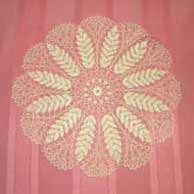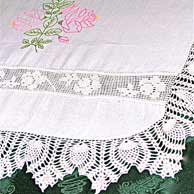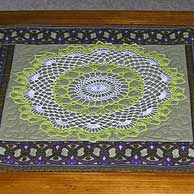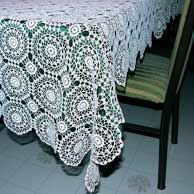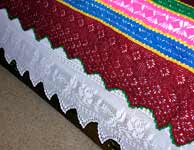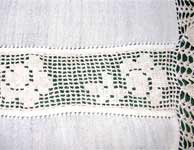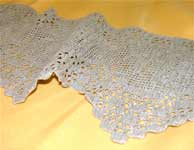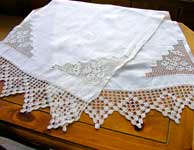About Doukhobor Crocheting
Many Doukhobor crocheted heritage pieces may have been inspired by published patterns but they nevertheless represent a significant tradition of the skills brought from Russia. Some of the earliest crocheting was used as edgings and borders on woolen “zanaveskee” and bed sheets, as well as inserts for miscellaneous decorative linens.
Doukhobor women were very resourceful during the harsh economic times of the depression and many created and sold their fancywork as a way to supplement the family income.
The earliest fibres available for crocheting were the homespun wools and linens. After the 1940s, most crocheting was done with commercial materials. Many doilies and large tablecloths were crocheted from fine white cotton. Before the use of commercial starches to stiffen the crocheted articles, Dorothy Burnham, in her publication Unlike the Lilies, writes,
"A special homemade starch was used to stiffen the white cotton crochet and knitting. To make it, raw potatoes were scraped and the scrapings were pounded thoroughly. The pulp was then squeezed through a cloth or a sieve and boiling water was added to it. The result was a colorless and quite satisfactory starch produced at virtually no cost, and with very little effort."
In the 1960s with the availability of acrylic yarns, women began crocheting afghans and bedspreads and this hobby continues to this day. Now, many vintage Doukhobor crocheted doilies are incorporated into other creative projects, such as embellishments for clothing, memory quilts, cushions and quilted coffee table runners. In many homes, larger crocheted tablecloths still may grace a formal table for a special occasion. Some homes still may display a crocheted doily as a nostalgic tribute to our earlier Doukhobor way of life.
